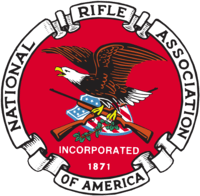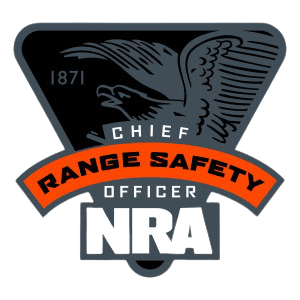ProQual Level 4 Award in Close Protection in a Hostile Environment – Firearms and Tactics
Dates
Any time of the month
Length
10 Days
Price
$6600
Location
USA, UK, Thailand, Lebanon, Sri Lanka, Spain and Italy

Introduction
Here's A Breakdown Of What HEFAT Training Typically Entails:
Firearms Training: HEFAT programs often include intensive firearms training, focusing on proficiency with a variety of weapons commonly used in hostile environments, such as handguns, rifles, and shotguns. Participants learn marksmanship, weapon handling, and tactics for engaging threats in different scenarios.
Tactical Skills: Participants are trained in tactical maneuvers and techniques for navigating hostile environments. This includes movement under fire, room clearing, vehicle operations, and small unit tactics. Training also covers principles of cover and concealment, situational awareness, and communication during high-stress situations.
Medical Training: HEFAT training typically includes basic medical training to address injuries and medical emergencies in the field. Participants learn techniques for treating gunshot wounds, managing trauma, and administering first aid in challenging environments where professional medical care may be limited or unavailable.
Hostile Environment Awareness: Participants are educated on the specific threats and challenges they may encounter in hostile environments, including terrorist threats, criminal activity, improvised explosive devices (IEDs), and hostile surveillance. Training emphasizes risk assessment, threat mitigation strategies, and personal security measures.
Psychological Preparedness: HEFAT training also addresses the psychological aspects of operating in hostile environments, including stress management, resilience, and coping strategies for dealing with trauma and adversity.
As For Career Prospects, HEFAT Training Can Lead To Various Career Paths, Including:
Military or Law Enforcement Special Operations: HEFAT training is essential for personnel serving in special operations units tasked with conducting missions in high-threat environments, such as counter-terrorism operations or hostage rescue missions.
Private Security Contracting: Many private security companies require HEFAT-trained personnel to provide security services for clients operating in conflict zones, including government agencies, NGOs, media organizations, and corporate entities.
Journalism and Media: Journalists and media professionals working in conflict zones often undergo HEFAT training to enhance their safety and security while reporting from dangerous areas. This training enables them to navigate risks and threats while covering sensitive stories.
Humanitarian Aid and Disaster Response: Humanitarian workers and disaster response teams operating in volatile regions may undergo HEFAT training to prepare for the unique challenges of delivering aid in hostile environments, such as conflict zones or natural disaster areas with limited infrastructure.
Overall, HEFAT training equips individuals with valuable skills and knowledge to operate safely and effectively in hostile environments, opening up opportunities for careers in various fields where security and risk management are paramount.
Entry Requirements
Qualification Structure
Candidates must complete the 4 Mandatory units.
T/615/4234 Foot Tactics
A/615/4235 Vehicle Tactics
F/615/4236 Weapon Tactics
J/615/4237 Carbine Tactics
Assessment
Candidates must demonstrate the level of knowledge described in the unit. Assessment is the process of measuring a candidate’s knowledge and understanding against the standards set in the qualification.
Each candidate is required to produce evidence which demonstrates their achievement of all of the learning outcomes and assessment criteria for each unit.
Evidence can include:
– assignments/projects/reports
– worksheets
– portfolio of evidence
– course work
Learning outcomes set out what a candidate is expected to know, understand or be able to do.
Assessment criteria specify the standard a candidate must meet to show the learning outcome has been achieved.
To achieve this qualification all candidates must produce evidence which demonstrates their achievement of all of the assessment criteria.
1. Be able to differentiate between and deal with aggressive/non aggressive subjects
1.1 Carry out appropriate actions taken when dealing
with:
- non aggressive subjects
- aggressive subjects
2. Be able to carry out foot formations in a hostile environment
2.1 Adopt closed and open v, box and diamond foot
formations
2.2 Adapt the profile of the formation suitable for the
situation
2.3 Provide cover when moving a VIP on foot
3. Be able to adopt multiple firing positions and stances and shoot from cover
3.1 Adopt recognised positions that are appropriate to the cover and ground available, such as:
- prone
- kneeling unsupported
- kneeling supported
- crouching
- sitting
- standing
3.2 Adopt recognised stances to aid the marksmanship
principles with any weapon:
weaver
modified weaver
isosceles
modified isosceles
1 Understand the processes involved in the
evaluation of information for use within
intelligence products
1.1 Explain the stages within the intelligence cycle
1.2 Explain the information required for intelligence
products
1.3 Summarise the format of intelligence collection
plans
1.4 Explain the potential sources of information for
use within intelligence products
1.5 Explain how to evaluate information for its
reliability, validity and contribution to products
1.6 Explain the reasons why it is important to use
appropriately classified information
1.7 Explain how to protect information sources
1.8 Summarise remedial actions that might be taken
to resolve problems with intelligence products
1.9 Summarise the reasons why it is important to
apply collection methods effectively
1.10 Explain the use and limitation of systems for
collating information
1.11 Explain the reasons why it is important to be
able to provide audit trails
2 Be able to evaluate information for use
within intelligence products
2.1 Identify the types and range of information
required in line with organisational procedures
2.2 Establish agreed intelligence collection plans in
line with organisational procedures
2.3 Evaluate sources of information for their
contribution to intelligence products in line with
organisational procedures
2.4 Obtain appropriately classified information in
line with organisational procedures
2.5 Collate information in line with the requirements
of the products
2.6 Resolve identified problems with the collection
of information in line with organisational
procedures
2.7 Evaluate information for its reliability, validity
and contribution to products in line with
organisational procedures
2.8 Comply with all national and organisational
requirements relating to intelligence information
handling and analysis
1 Understand the application
of analytical techniques
1.1 Explain how to confirm that the information being analysed is
relevant
1.2 Compare analysis techniques in order to select the most
appropriate to the task
1.3 Justify the use of specific techniques used together or separately
1.4 Describe the systems and processes for recording analysis results
1.5 Explain the interpretation of information being analysed
1.6 Explain the requirements for the presentation of analysis results
2 Be able to apply analytical
techniques
2.1 Confirm that all relevant and available information has been
collated in line with organisational procedures
2.2 Analyse information using approved techniques in line with
organisational procedures
2.3 Identify aspects of the analysis process that affect the credibility
and validity of end products in line with organisational
procedures
2.4 Present analytical products using organisationally approved
techniques to highlight:
• relevant patterns
• relevant trends
• relevant activities
• known risks in credibility
• known risks in validity
2.5 Present analytical products in accordance with customers’
requirements
1 Understand requirements for making
assessments developed through
intelligence analysis
1.1 Explain the principles of making assessments from
intelligence gathered
1.2 Explain how to test assessments
1.3 Explain how to identify relationships, anomalies
and patterns that could affect assessments
1.4 Explain how to interpret the need for further
information or analysis
1.5 Explain the application of confidence levels
regarding assessments
1.6 Explain how to present assessments, including
those that indicate the need for urgent action
1.7 Explain how assessments contribute to the
development of recommendations
2 Be able to develop assessments from
intelligence analysis
2.1 Apply appropriate methods to identify key
findings from the information in line with
organisational procedures
2.2 Identify significant relationships, gaps, anomalies
and patterns that occur within the information
2.3 Establish if there is a need for further information
or analysis
2.4 Explain key findings clearly and accurately to
others in line with organisational procedures
2.5 Develop assessments in line with organisational
procedures
2.6 Test assessments in line with organisational
procedures
2.7 Provide audit trails for the structure and logic of
assessments in line with organisational
procedures
3 Be able to make recommendations based
on assessments that have been developed
3.1 Provide clear forecasts of developments and likely
consequences in line with organisational
procedures
3.2 Make recommendations that are supported by
the results of the analysis
3.3 Differentiate clearly between facts and opinions
when presenting recommendations
1 Understand the factors that influence the
development of recommendations from
the results of intelligence analysis
methodologies
1.1 Explain how to identify potential
recommendations
1.2 Summarise the types of advantages and
disadvantages that could be explored
1.3 Explain how to confirm that recommendations are
appropriate, feasible and realistic
1.4 Explain why it is important to provide clear
rationales
1.5 Summarise the types of issues that could arise
when developing recommendations, including
potential consequences
1.6 Explain the importance of complying with relevant
national and organisational requirements relating
to information usage, its handling and analysis
1.7 Summarise the potential consequences of noncompliance, with relevant national and
organisational requirements relating to
information usage, its handling and analysis
2 Be able to develop recommendations
from the results of intelligence analysis
methodologies
2.1 Review all available information arising from the
analysis methodology in line with organisational
procedures
2.2 Identify the potential range of recommendations
that are available
2.3 Explore the advantages and disadvantages of each
potential recommendation
2.4 Identify potential recommendations that are
appropriate, feasible and realistic in consultation
with key stakeholders
2.5 Develop clear rationales for the selection of the
recommendations, in accordance with customers’
specified requirements
2.6 Comply with all relevant national and
organisational requirements relating to
information usage, its handling and analysis
1 Understand the principles involved
in the creation of intelligence
products
1.1 Describe the range of intelligence products in use
1.2 Explain the purpose of the intelligence products
1.3 Summarise how differing intelligence products are
produced
1.4 Explain the importance of the accuracy, currency,
relevance, timeliness and coverage of the intelligence
products
1.5 Explain how to use reasoned argument to support
decision making based on intelligence analysis
1.6 Explain the audit trail process
2 Be able to create intelligence
products to support decision making
2.1 Produce products that meet customers’ specified
requirements
2.2 Create intelligence products that are accurate, current,
relevant, timely, sufficient and in line with
organisational procedures
2.3 Support intelligence products with audit trails in line
with organisational procedures
2.4 Maintain appropriate records of the intelligence
products in line with organisational procedures
1 Understand processes for
disseminating intelligence
products
1.1 Describe the characteristics of different types of audience
for intelligence products
1.2 Compare presentation methods that could be used for
different types of audience
1.3 Explain how to select the most effective presentation
methods for different intelligence products
1.4 Summarise how to respond to queries and issues relating to
gaps in intelligence products
1.5 Explain the appropriate methods involved in disseminating
information
2 Be able to disseminate
intelligence products
2.1 Disseminate intelligence products in accordance with
customers’ requirements and in line with organisational
procedures
2.2 Select the most effective media and content of the
intelligence products to suit the identified needs of the
intended audiences
2.3 Take action to deal with problems with the dissemination of
intelligence products in line with organisational procedures
2.4 Use the selected presentation methods to disseminate
intelligence products in line with organisational procedures
2.5 Provide customers with opportunities to check their
understanding of the intelligence products
2.6 Respond effectively to queries and issues raised
2.7 Use feedback to improve the content and dissemination of
intelligence products
1 Understand how to evaluate and
report elicited information in an
intelligence setting
1.1 Summarise the relevant legislation and organisational
procedures for evaluating and reporting elicited
information
1.2 Explain how to establish the content and purpose of
reports
1.3 Explain how to identify audiences for reports, their needs
for information and any other relevant factors
1.4 Justify the importance of conducting an impartial
evaluation of the findings
1.5 Explain how to conduct an impartial evaluation of the
findings
1.6 Summarise the production of written reports based on
findings
1.7 Explain how to conduct a presentation of findings using
appropriate media
1.8 Summarise how to resolve problems which may occur
within the evaluation and reporting of elicited
information
1.9 Justify the importance of identifying opportunities and
resources for further research if they exist
2 Be able to evaluate and report
elicited information in an
intelligence setting
2.1 Establish the content, purpose and intended audiences
for reports
2.2 Conduct an impartial evaluation of the significance and
relevance of the findings of the analysis in line with
organisational procedures
2.3 Identify gaps in knowledge that may impact customers’
requirements
2.4 Identify opportunities for further investigation if they
exist in line with organisational procedures
2.5 Communicate findings in reports that meet organisational
procedures
2.6 Provide a clear and accurate presentation of the findings
using appropriate media in line with organisational
procedures
2.7 Record information elicited without error
Qualification
ProQual Level 4 Award in Close Protection in a Hostile
Environment – Firearms and Tactics
Ofqual Qualification Number
Level
4
Prerequisite
- ABA Level 2 Basic Award in First Aid at Work Awareness
- ProQual Level 3 Award in Hostile Environment Awareness
- ABA Level 3 Award in Hostile Environment Awareness
- Or Equivalent with Instructor’s Approval
Assessment
Learning Outcomes and Assessment Criteria
Unit T/615/4234
Foot Tactics
Learning Outcome - The learner will: Assessment Criterion - The learner can:
1) Be able to differentiate between and deal with aggressive/non aggressive subjects
1.1 Carry out appropriate actions taken when dealing with:
• non aggressive subjects
• aggressive subjects
2) Be able to carry out foot formations in a hostile environment
2.1 Adopt closed and open v, box and diamond foot formations
2.2 Adapt the profile of the formation suitable for the situation
2.3 Provide cover when moving a VIP on foot
3) Be able to adopt multiple firing positions and stances and shoot from cover
3.1 Adopt recognised positions that are appropriate to the cover and ground available, such as:
• prone
• kneeling unsupported
• kneeling supported
• crouching
• sitting
• standing
3.2 Adopt recognised stances to aid the marksmanship principles with any weapon:
• weaver
• modified weaver
• isosceles
• modified isosceles
3.3 Identify manmade and natural obstacles that can be used to aid the cover and support fire position
4) Be able to extract and support someone in danger
4.1 Remove a principle from a direct threat via the safest route
4.2 Remove a casualty from the scene of an incident via the safest means
4.3 Provide emergency evacuation drills to team members and casualties during these incidents
5) Be able to react to attacks from different areas
5.1 Recognise enemy contact from all angles
5.2 React to enemy fire
5.3 Suppress the enemy by returning fire and extract the VIP via the quickest and safest means
6) Be able to demonstrate the ability to provide body cover to a VIP
6.1 Identify a substantial threat that requires immediate action
6.2 Demonstrate techniques to move and provide vital
cover to a VIP in:
• standing
• kneeling
• lying positions
7) Be able to disable armed aggressors and how to retain a weapon
7.1 Demonstrate how to disable an armed aggressor using taught hand to hand combat methods
7.2 Demonstrate taught hand to hand combat techniques to retain their personal weapon system from a potential aggressor
Unit A/615/4235
Vehicle Tactics
Learning Outcome - The learner will: Assessment Criterion - The learner can:
1) Be able to carry out embus and debus drills
1.1 Adapt the profile of embus and debus dependant on the environment and operatives
1.2 Provide body cover when entering and exiting vehicles
1.3 Deal with potential aggressors when getting in and out of the vehicle
2) Be able to carry out vehicle movements
2.1 Demonstrate the ability to react to enemy fire with the use of the vehicle
2.2 Demonstrate how to evade enemy road blocks/check points
2.3 Demonstrate manoeuvring a vehicle whilst under enemy fire to act as cover and support to other team members
3) Be able to carry out vehicle extraction
3.1 Evacuate a casualty from a vehicle to a safe place
3.2 Demonstrate the ability to evacuate a vehicle with multiple
casualty’s into an alternative vehicle whilst maintaining safety
4) Be able to store weapons inside a vehicle
4.1 Store (conceal) a weapon so as to not arouse suspicion at check points
4.2 Demonstrate successfully reacting to fire whilst weapons are stored
5) Be able to react to attack whilst driving
5.1 Recognise enemy fire from all angles
5.2 React to enemy fire when static
5.3 React to enemy fire whilst in transit
5.4 Extract in the vehicle via the safest route
Unit F/615/4236
Weapon Tactics
Learning Outcome - The learner will: Assessment Criterion - The learner can:
1 Be able to carry out embus
and debus drills
1.1 Adapt the profile of embus and debus dependant on the
environment and operatives
1.2 Provide body cover when entering and exiting vehicles
1.3 Deal with potential aggressors when getting in and out of the
vehicle
2 Be able to carry out vehicle
movements
2.1 Demonstrate the ability to react to enemy fire with the use of
the vehicle
2.2 Demonstrate how to evade enemy road blocks/check points
2.3 Demonstrate manoeuvring a vehicle whilst under enemy fire
to act as cover and support to other team members
3 Be able to carry out vehicle
extraction
3.1 Evacuate a casualty from a vehicle to a safe place
3.2 Demonstrate the ability to evacuate a vehicle with multiple
casualty’s into an alternative vehicle whilst maintaining safety
4 Be able to store weapons
inside a vehicle
4.1 Store (conceal) a weapon so as to not arouse suspicion at
check points
4.2 Demonstrate successfully reacting to fire whilst weapons are
stored
5 Be able to react to attack
whilst driving
5.1 Recognise enemy fire from all angles
5.2 React to enemy fire when static
5.3 React to enemy fire whilst in transit
5.4 Extract in the vehicle via the safest route
Unit J/615/4237
Carbine Tactics
Learning Outcome - The learner will: Assessment Criterion - The learner can:
1) Be able to use a weapon safely 1.1 Demonstrate the safe use of the weapon system, such as:
• safety mechanisms
• safe direction and aspects of range safety misfires / breaches
• safe loading and unloading
2) Be able to maintain a weapon system 2.1 Demonstrate the ability to correctly disassemble the weapon system using correct methods and tools (where applicable)
2.2 Demonstrate the correct method of cleaning to ensure the weapon functions correctly
2.3 Demonstrate the correct method of re assembly including weapon safety and function checks
3) Be able to complete firing techniques: long range, close range, from behind cover
3.1 Demonstrate the safe identification of:
• close range targets
• long range targets
3.2 Identify the safety aspects at firing at:
• close range
• long range
• behind cover
3.3 Fire a weapon at a target aiming at centre of mass
3.4 Adopt the following stances to aid in the effectiveness of shooting at a distance:
• prone
• kneeling (supported / unsupported)
• standing
3.5 Demonstrate engagement of targets from behind cover
4) Be able to fire from alternative firing positions
4.1 Demonstrate weapon handling whilst on the range
4.2 Identify which fire position is best for the
• environment
• distance
4.3 Adopt and accurately acquire targets so aimed shots at centre mass are being applied
5) Be able to tactically withdraw from contact
5.1 Demonstrate identification of targets at
• long range
• close range
5.2 Identify the safety aspects at firing in close proximity to other candidate whilst in motion
5.3 Fire a weapon with aimed shots at centre mass of the target
5.4 Adopt varied positions, stances and tactical turns in order to safely and accurately return fire
5.5 Retreat back to safe area successfully
6) Be able to carry out tactical reloads 6.1 Demonstrate safe weapon handling whilst on the range with another candidate
6.2 Identify the safety aspects at firing in close proximity to another candidate
6.3 Carry out all relevant drills and reload the weapon as to give the enemy a lower amount of time to engage the student
6.4 Adopt variety of methods to aid in the effective reload for
• tactical
• speed
7) Be able to switch from a primary to a secondary weapon
7.1 Demonstrate safe weapon handling whilst on the range
7.2 Identify which fire position is best for the environment and distance
7.3 Adopt and accurately acquire targets and shoot with a damaging effect
7.4 Demonstrate the ability to holster or sling the primary and safely draw the pistol and carry on engaging the target












